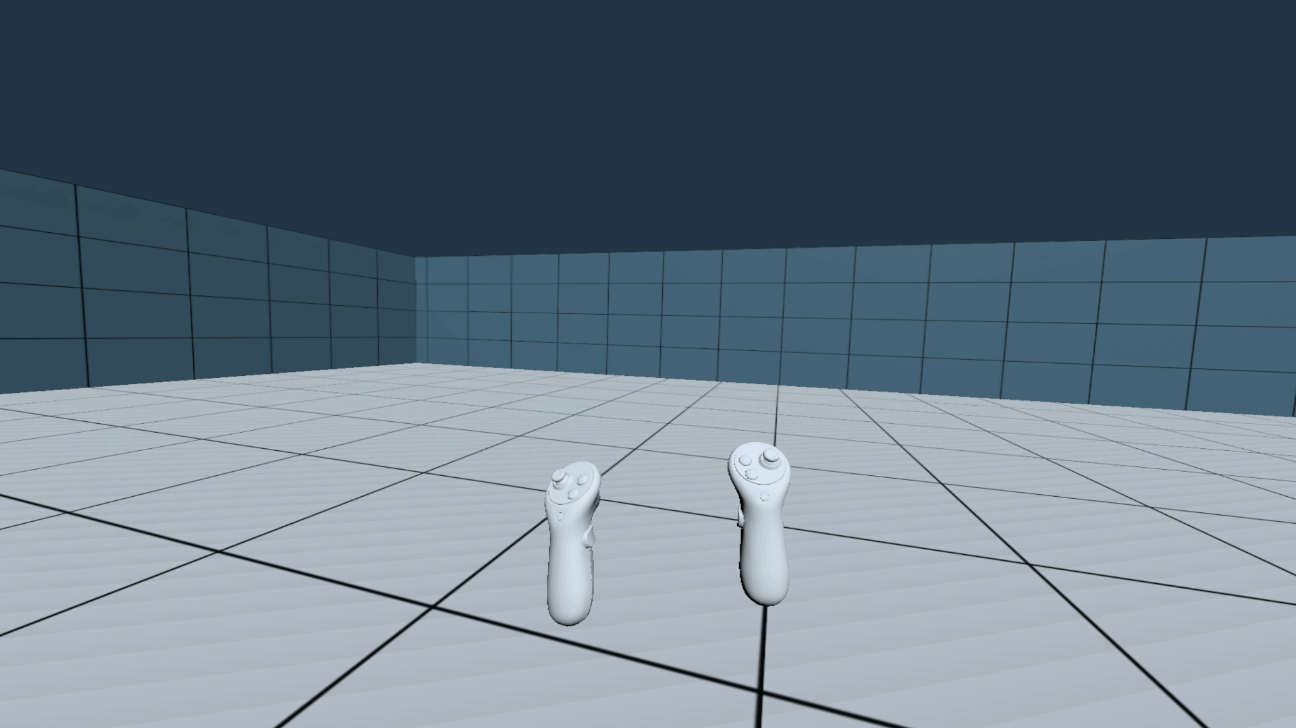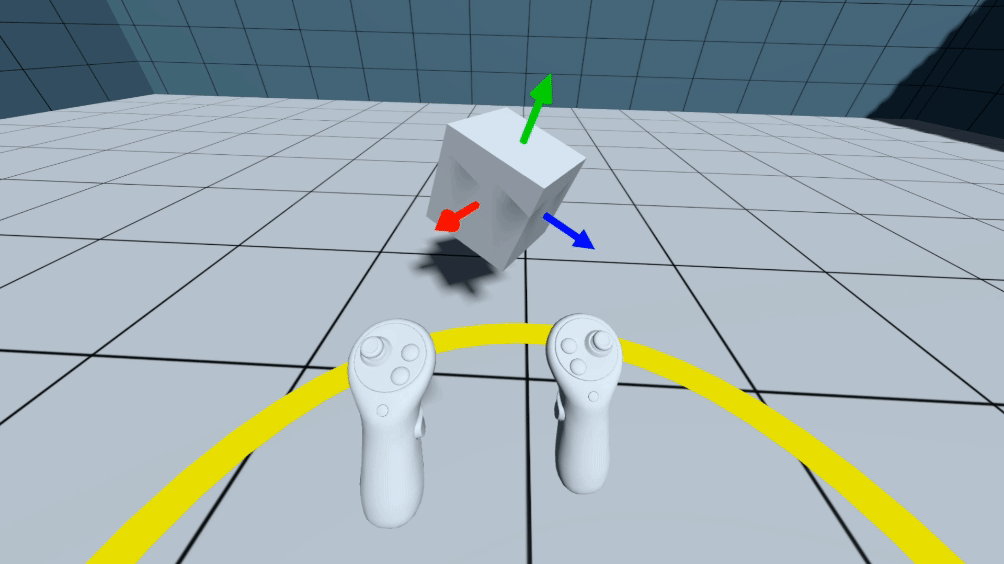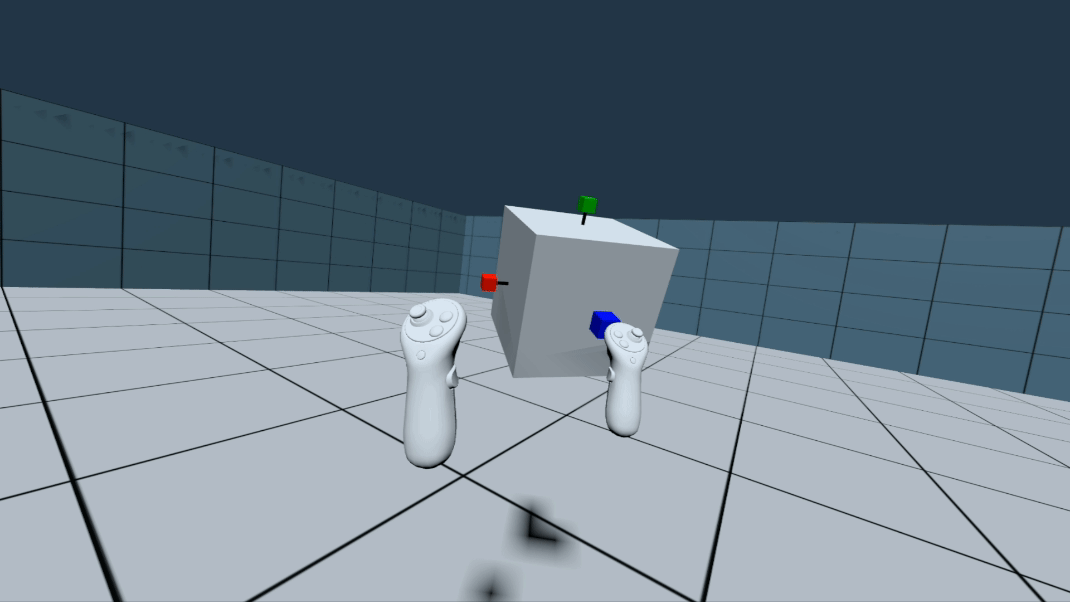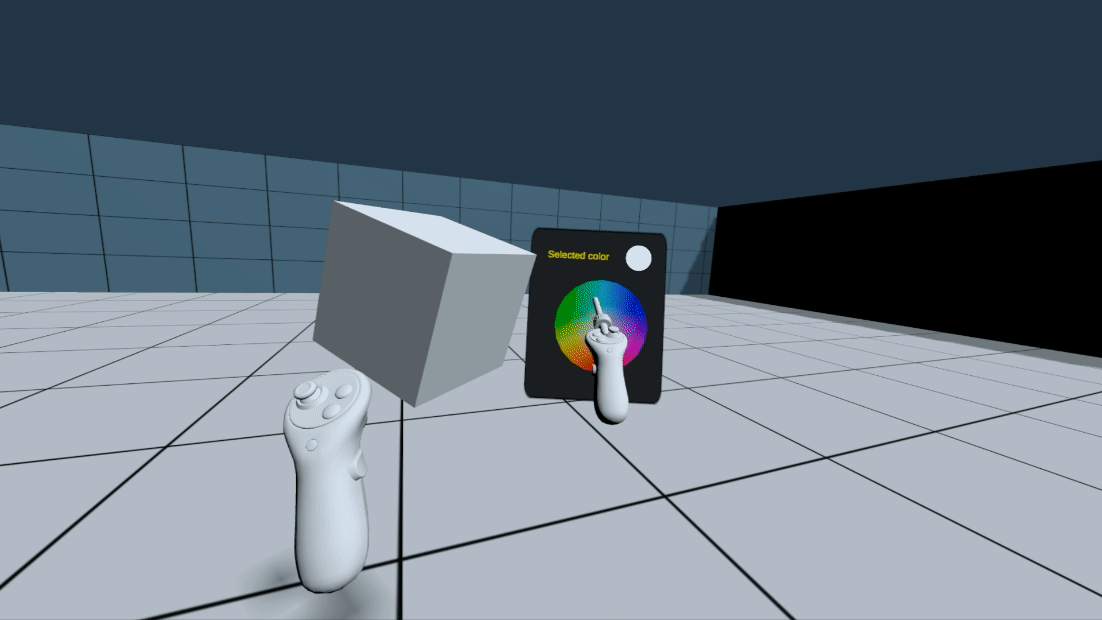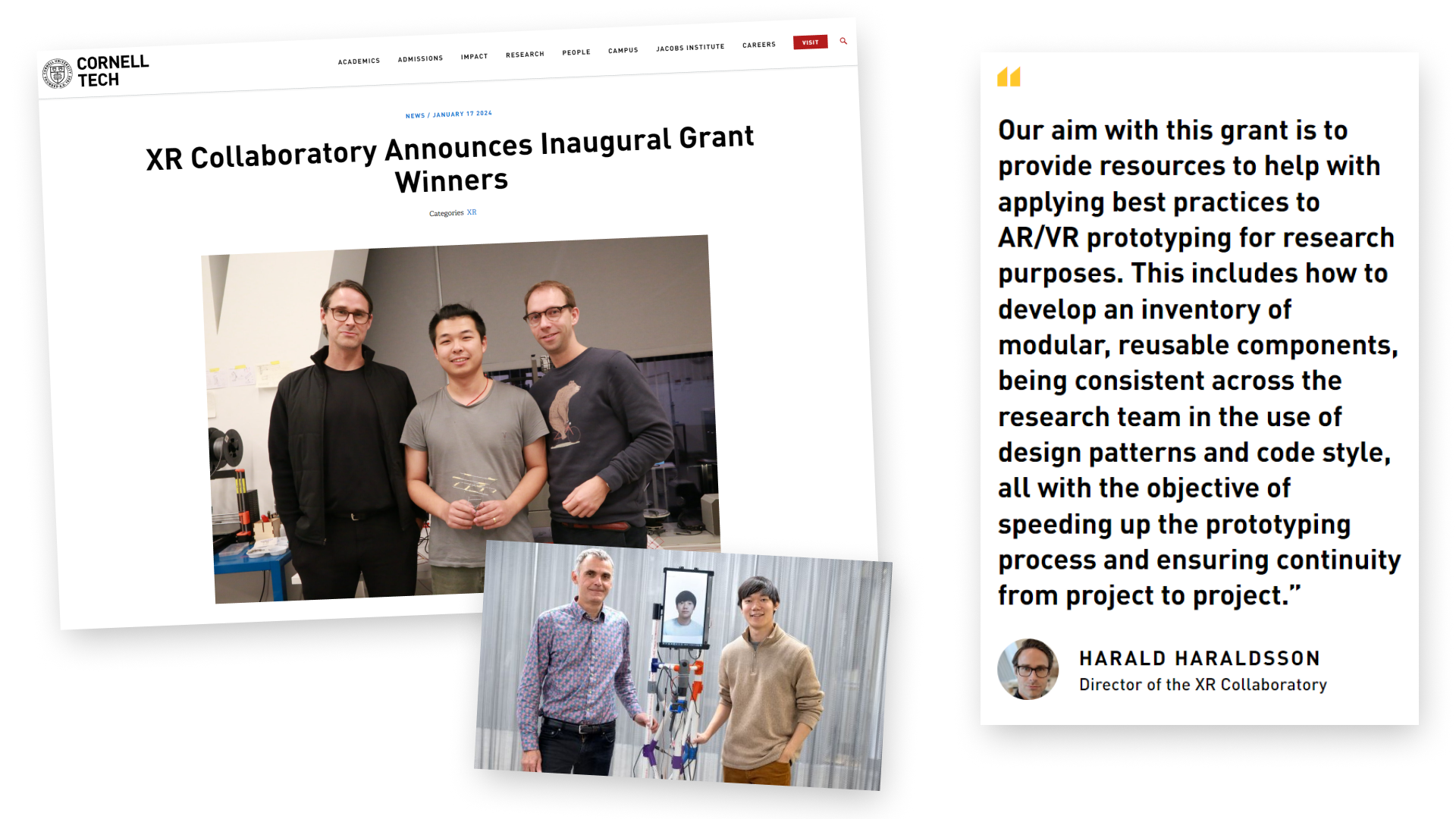XRC Toolkit
The XRC Toolkit is a collection of tools and 3D interaction techniques, developed at the XR Collaboratory, Cornell Tech, for accelerating AR/VR prototyping.
High-fidelity prototyping for AR/VR interaction design can be challenging and time consuming. As the number of projects utilizing AR/VR continues to increase in academia, more researchers are faced with the challenge of creating prototypes that can be easily maintained and applied across different research projects.
As the Director of the XR Collaboratory, I lead this project and manage a team of contributors, including XRC staff and students.
——————————
My role
Project lead, design, engineering, system architecture
——————————
Stack
Unity, C#, .NET, GitHub Actions, DocFX,
——————————
Timeline
2024 - present
——————————
Past contributors
Sky Rolnick (XR Collaboratory)
William Leon (XR Collaboratory)
——————————
Student contributors
Connor Pugh (Cornell Tech)
Qingxuan Yan (Cornell Tech)
——————————
Objectives
Accelerate the implementation of AR/VR prototypes
Make prototypes interoperable
Improve project continuity
The Solution
To achieve these goals, we developed the XRC Toolkit, a collection of Unity packages (UPM) containing implementations of various tools and techniques for AR/VR interaction.
The XRC Toolkit accelerates prototyping by providing utility packages and ready-to-use components, along with instructions and best-practices for package development and distribution.
The XRC Toolkit enables interoperability by providing guidelines on package architecture and design principles, increasing consistency between prototypes.
The XRC Toolkit improves continuity for projects, as each XRC Toolkit package is fully documented with installation instructions, scripting API, and changelog.
Impact
All student projects at the XR Collaboratory are now implemented as packages following the XRC Toolkit guidelines.
Assignments and group projects in our courses are often implemented as XRC Toolkit-compliant packages.
The XRC Toolkit and its guidelines are now used in every new prototype implemented at the XR Collaboratory.
Our faculty collaborators have access to the XRC Toolkit and can use it as a development reference.
We launched the XR Collaboratory Prototyping Grant, where the XRC Toolkit was a vital component.
Selected packages
